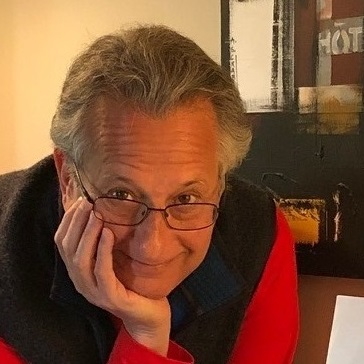Which way are we headed, politically, and why are we so polarized?
My first political memory is from age six — Election Night 1960. (I was irritated at being sent to bed before the winner was known.) Twelve years later, at age 18, energized by the ongoing collapse of segregation in my home state of Virginia, I was elected chairman of my hometown’s Democratic Party and served throughout the raging Watergate saga.
The city’s Republican chairman was a family friend, and all the while, we enjoyed polite political discussions. We remain friends a half-century later.
Across-the-aisle camaraderie is almost unthinkable nowadays. Division seems to be the only thing uniting us. In the bizarre election year of 2020, I ponder why.
A common trope holds that over time, liberals (Democrats) moved sharply leftward while conservatives (Republicans) moved sharply rightward. That widening crevasse, the story goes, polarized us. I don’t buy it.
In a recent article —“Leftward Ho!”— my Mercatus Center colleague Chuck Blahous and I explained why not.
We argued that for decades, there’s been a bipartisan shift toward the left with liberals/Democrats hurtling rapidly and conservatives/Republicans also heading leftward, albeit more slowly. (Our analogy of liberals on a westbound airplane and conservatives on a westbound train was featured in David Brooks’ New York Times column.)
As evidence, we listed present-day mainstream left-of-center policies that would have been unthinkable, say, at the 1996 Democratic Convention: Green New Deal, single-payer healthcare, canceling college debts, doubling the minimum wage, same-sex marriage, Supreme Court packing, sanctuary cities, Electoral College abolishment. We found no contemporary left-of-center policies that would have been too conservative for Clinton-era Democrats.
We did the same for conservatives/Republicans and similarly found only leftward movement: same-sex marriage, guaranteed health insurance for those with pre-existing conditions, nonchalance regarding deficits, abandonment of privatized Social Security accounts.
While the right’s leftward movement was slower, we found no significant examples of contemporary conservative thinking that would have been too conservative for Clinton-era Republicans.
Yet, we’re now polarized as we weren’t in 1960 or 1996.
Neighbors cannot discuss politics. Families shatter over political differences. People openly demand that those with blasphemous political views be ostracized, fired, and even assaulted. We’re so divided that a small example of civility qualifies as national news.
Why?
I’m privileged to enjoy an amicable correspondence with a long-time friend whose politics and policy views are distant from mine. Recently, he asked for my thoughts on the origins of America’s polarization.
Here’s an edited version of my response, supplemented by further thoughts and conversations:
ROE v WADE: In 2018, Michael Barone, whose abortion views are unknown to me, wrote “How Roe v. Wade Polarized America.” He notes that when the Supreme Court decided the case, Michigan’s Republican governor was pro-choice and Michigan’s Democratic house speaker was pro-life. Roe, Barone argues, prompted absolutism in both parties, honing a razor-sharp emotional wedge that ultimately made liberal Republicans and conservative Democrats untenable.
ELECTION 2000: The contentious election, ultimately decided by a divided Supreme Court, left a permanent bitterness. In contrast, Richard Nixon, a bitter partisan if there ever was one, refused to contest John Kennedy’s election, though he suspected (perhaps correctly) that ballot fraud in Illinois and Texas had deprived him of the presidency. Stoic acceptance of dubious results was part of a longstanding, unwritten truce in American politics. Something changed after 2000.
PRECISION REDISTRICTING: My colleague Dan Griswold noted that advances in computer technology have enabled legislators of both parties to gerrymander legislative and congressional districts to a previously unimaginable degree. (Chuck Blahous has analyzed this.) This produces one-party districts where winning strategies involve enraging ideological voters, rather than reaching out to centrist independents.
THE RISE OF SOCIAL MEDIA: I’m an internet fan, but it has a toxic downside. In a superb documentary, “The Social Dilemma,” technologists who developed Facebook, Twitter and other platforms express terror at their creations — monstrosities that reward aggressive, divisive, anti-social behavior. A while back, someone noted that from 1975 to 2007 (32 years), Australia had four prime ministers. In the 13 years since, there have been six. The boundary was marked by the introduction of Twitter and its ideological rage mobs.
And with that, I think I’ll go do some gardening.

